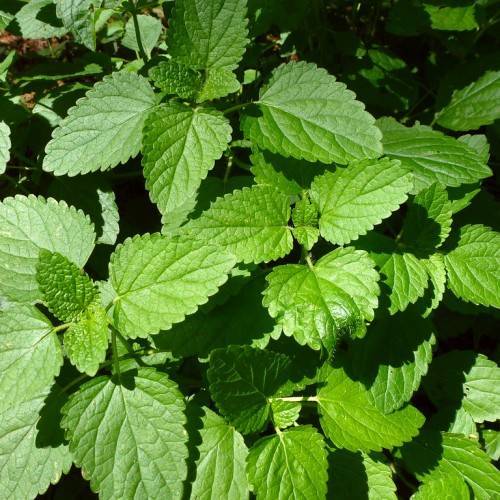
lemon balm
Melissa officinalis
Cycle:
Herbaceous Perennial
Watering:
Minimum
Hardiness Zone:
3 - 7
Flowers:
Flowers In Summer
Sun:
Full sun, Part sun/part shade
Soil:
Humus rich
Fruits:
Fruits In Autumn Ready In Fall
Leaf:
Yes
Growth Rate:
High
Maintenance:
Low
watering
Lemon balm (Melissa officinalis) is a plant that thrives in moist soil and benefits from regular watering. The soil should be kept moist but not waterlogged. In general, water lemon balm every 7–10 days when the top inch of soil is dry. During hot and dry periods the plant may need to be watered more frequently. Pay attention to weather conditions and modify your watering schedule accordingly. Lemon balm may benefit from occasional misting during dry spells, but keep in mind that overhead watering can increase the risk of disease.
sunlight
Lemon balm plants prefer bright, indirect sunlight at least 4 to 6 hours per day. If placed in direct sunlight, even for half a day, the leaves may become scorched or burnt. To get the best results, place the lemon balm in a spot with bright light but not direct sunlight. If grown indoors, a south facing window can provide sufficient light, taking into account that the temperature and humidity levels are optimal for lemon balm. In the summer months, when the temperature rises, the plants can be moved to partial shade or moved from direct sunlight in the afternoon for midday heat protection.
pruning
Lemon balm is a hardy perennial herb and the pruning of this type of plant is essential for controlling its growth and size. Pruning should take place from late winter to early spring, before the plant goes into its active growth period. Prune lemon balm with early spring-season light pruning to shape the plant and to stimulate new growth as well as to remove dead and dying stem tissue. For an established lemon balm plant, cut the stems back to 6 to 8 inches, just above the first pair of healthy leaves. This will allow light to reach the inner parts of the plant as well as stimulate the growth of new shoots. Additionally, it is important to remove any woody or tangling stems that grow in the center of the plant as these can quickly take over the whole plant. Pruning back regularly will promote a more manageable and evenly-shaped plant.
